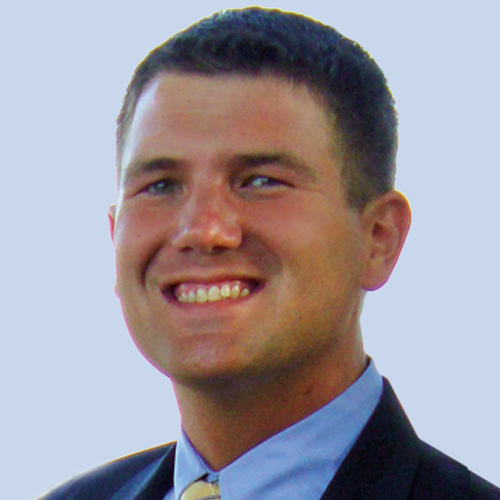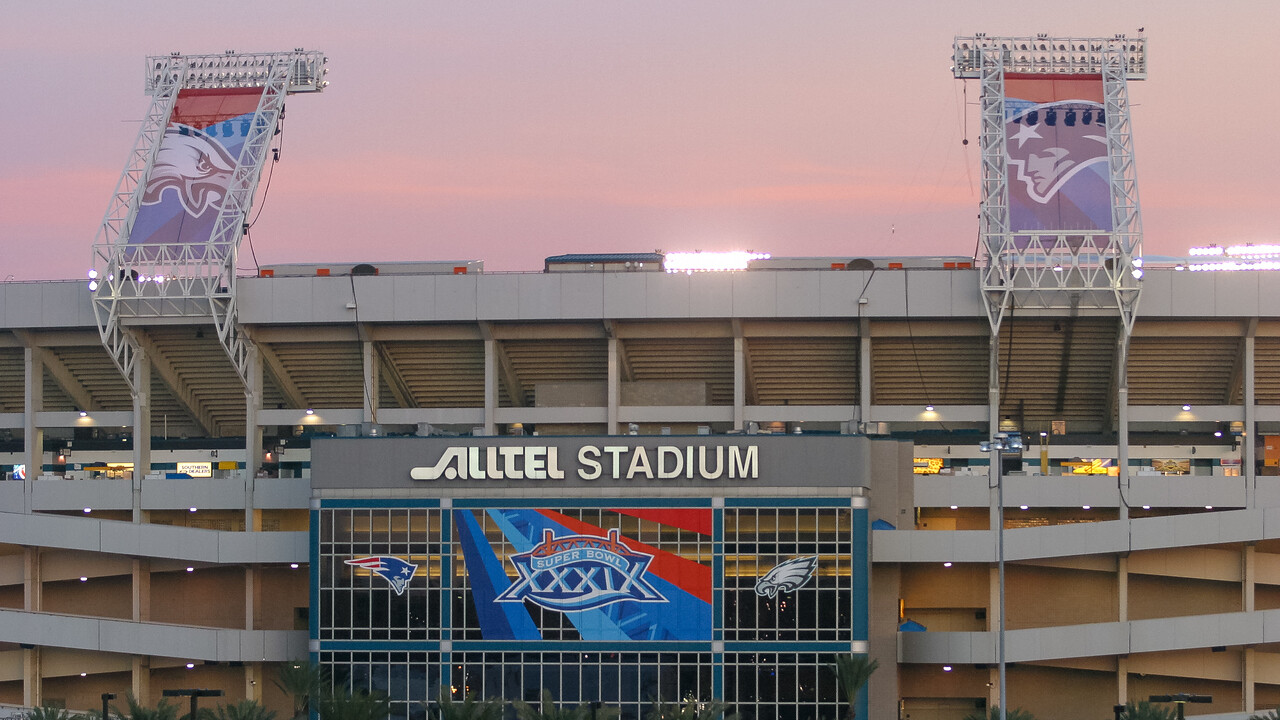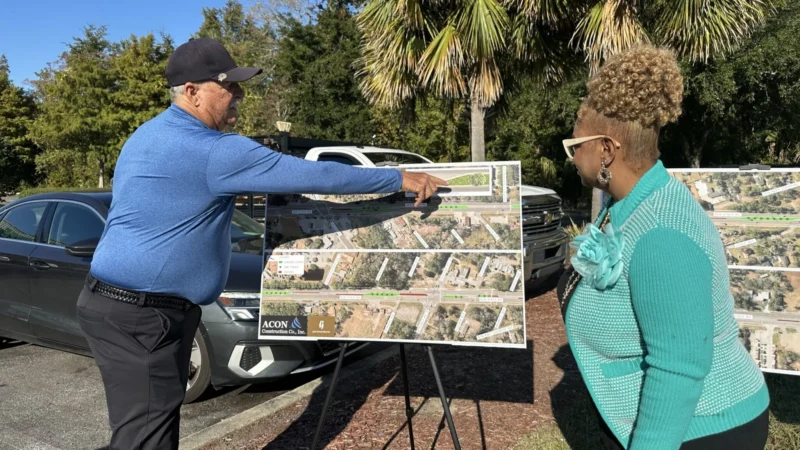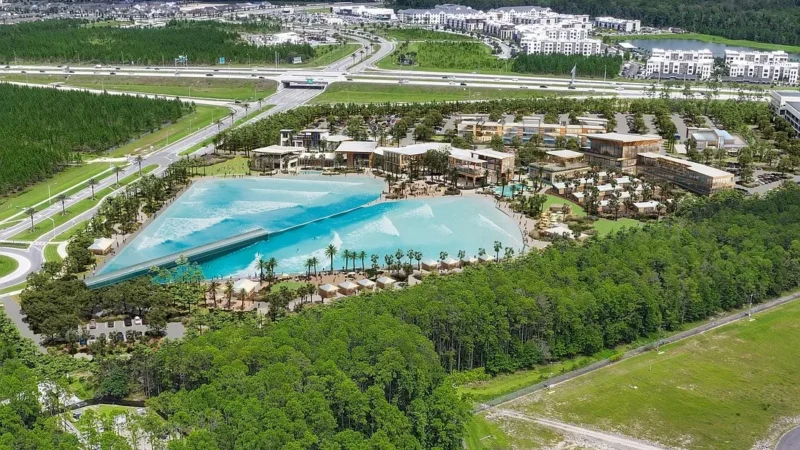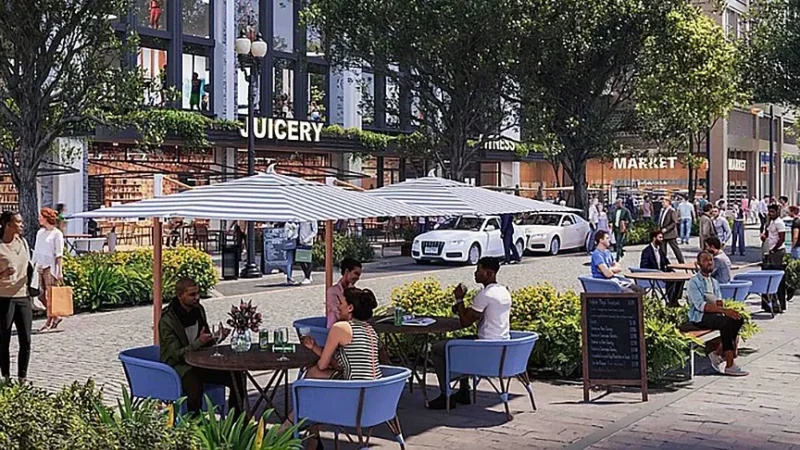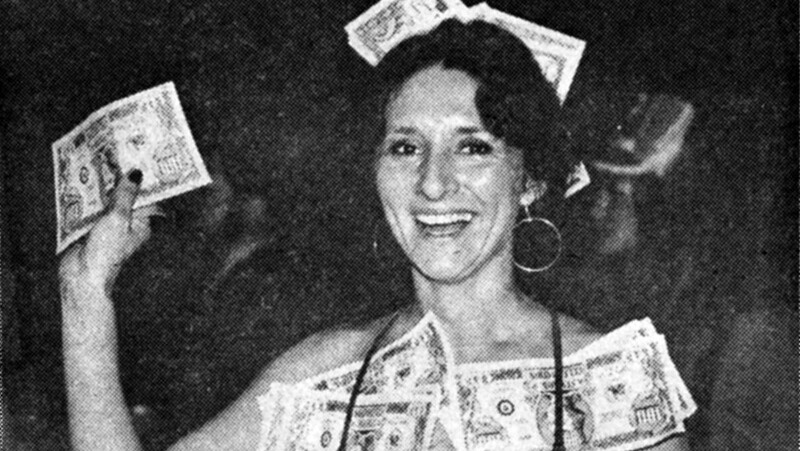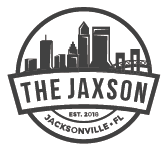
Just over 4,000 days since Jacksonville shocked the world by being awarded an NFL expansion franchise, our fair city defied the odds once again by hosting Super Bowl XXXIX on February 6, 2005. Celebrities, football fans and media from all around the world descended upon the “biggest little city”‘ throughout the week leading up to the big game. The amount of optimism running through the veins of Jaxsons from Lem Turner to Jacksonville Beach was unmatched.
Despite cold weather, the absence of hotel rooms and a cabal of haters armed with press passes, Jacksonville punched above its weight and put on a show few outsiders thought was possible. If one thing is for certain, Jacksonville has always, without question, known how to throw a big party. Welcome to Duval. So glad to have you, and please enjoy your stay. If it ain’t for you, then that’s your problem!

Mike Weinstein, Elaine Elder Brown, Tom Petway and Theresa O’Donnell-Price
To combat the lack of hotel rooms, Jacksonville was able to host the Super Bowl by providing “‘floating hotels.” This was an idea first floated in 1982 by former Mayor Jake Godbold. Godbold’s administration, along with nine other cities, formally pitched for Jacksonville to host the 1985 or 1986 Super Bowl. Cruise ships were the centerpiece of a bold plan to have enough hotel rooms to meet the NFL’s hospitality requirements. At the time, Downtown Jacksonville did not have any hotelling facilities large enough to
serve as a centralized host hotel. The NFL required a host hotel to have at least 750 rooms and meeting facilities. The lack of a host hotel was the lynchpin of Mayor John Delaney’s plan to lure the Adams Mark hotel to the Downtown riverfront. Opened in 2001, this 966-room hotel also has convention and meeting facilities. The Adams Mark was sold and converted to Hyatt Regency Jacksonville Riverfront in late 2005.

Collection, University of North Florida

With a worthy host hotel, Jacksonville then turned to the cruise ship industry to fill the hotel room gap. Four cruise ships were brought to town. The Seven Seas Navigator was the most prominent, being docked in from the Adams Mark hotel. Visitors that did not have a room aboard the Seven Seas Navigator could purchase tickets aboard the ship for parties and dinner throughout the duration of the ship’s time in Jacksonville. This served to bolster Downtown’s nightlife and entertainment options.

The Carnival Miracle was docked at a new cruise terminal facility opened by JAXPORT in 2003 off Heckscher Drive. Carnival has continued to call on this port ever since. Finally Holland America docked three ships along JAXPORT’s Talleyrand Marine Terminal: the MS Zuiderdam, MS Zaandam and MS Volendam. Given how far away the Talleyrand ships were from the rest of the Super Bowl activities, Winn-Dixie opened a pop-up grocery store alongside the dock to provide cruise ship guests with ample ways to
purchase necessities. Shuttle buses also brought guests to various stops around town 24 hours a day during the duration of the ships’ stay in town. Together, these cruise ships provided more than 3,500 “hotel rooms” within close enough proximity to Downtown.


Super Bowl. | Wikimedia Commons

riverfront. | Associated Press
Jacksonville has the dubious distinction of being the only city that tore down instead of redeveloped a festival marketplace. During the Super Bowl, the Jacksonville Landing served as the central gathering place for all reasons to celebrate special events, as it did for 30 years. In the six years since it was torn down, Jacksonville does not have a central gathering space that is capable of hosting large
celebrations.




Four of Jacksonville’s most prominent bridges received decorative uplighting ahead of the Super Bowl. Although the decorative lighting depicting a U.S. flag no longer adorns the towers of the John Alsop or Main Street Bridge, other bridge lighting upgrades have remained. In the case of the Acosta Bridge, decorative lighting displays have been substantially upgraded in the years since.



More than $10 million of public money was spent on sprucing up Jacksonville ahead of the Super Bowl. Beside the bridge lighting, other Super-Bowl era public works projects are still evident today. The Northbank Riverwalk extension from the CSX Building to the Northbank Riverwalk Artist Square made possible such amenities as Corkscrew Park, connections for the Emerald Trail and the Riverside Arts Market.

Although plans to redevelop Brooklyn started in the early 1990s, work to begin attracting new office towers and recruiting new companies to locate there ramped up ahead of the Super Bowl.





Originally conceived by Jim Bailey, former publisher of the Jacksonville Daily Record, the Bay Street Town Center was envisioned as an entertainment district along Bay Street ahead of the Super Bowl. This area is now known as “The Elbow.”
The Bay Street Town Center program upgraded infrastructure throughout Bay Street including streetscaping (lighting, trees, pavers) and the installation of computerized traffic signals (allowing four lanes of Bay Street to switch directions in order to accommodate traffic flow during gamedays and major events). The Jacksonville Economic Development Commission provided more than $2 million in loans to businesses to open restaurants, bars and dance clubs along Bay Street.
During the weeks leading up to the Super Bowl, Bay Street became a pedestrian-only street with a variety of pop-up retail stores and bars granted temporary licenses. Several businesses remained open for years after the Super Bowl.


Florida Times Union

of Jacksonville

Zone. | Associated Press

Street is now home to the Cowford Chophouse and Bold City Brewery


Between 1950 and 2002, JEA operated the Southside Generating Station on the Southbank. The land was cleared ahead of the Super Bowl and became the site of the NFL Experience, an 850,000-square-foot pro football-themed theme park.


Temporary docks were constructed along the Southbank Riverwalk to host boats and river taxi stops taking visitors to various stops Downtown. Guests were able to access the NFL Experience by water at this access point.


Today roadways and sidewalks are being constructed at this site called Rivers Edge. When completed, Rivers Edge will be home to a marina, townhomes, apartments, retail and hotel space overlooking Everbank Field.

Before the Super Bowl, there were no residents living along Downtown’s Southbank. Construction had already begun for the first of four planned high rise residential projects when guests arrived ahead of the Super Bowl.






units are centered here along Riverplace Boulevard in 2025.
Will Jacksonville ever see another Super Bowl? Never underestimate the ultimate underdog that is the Bold New City of the South.

